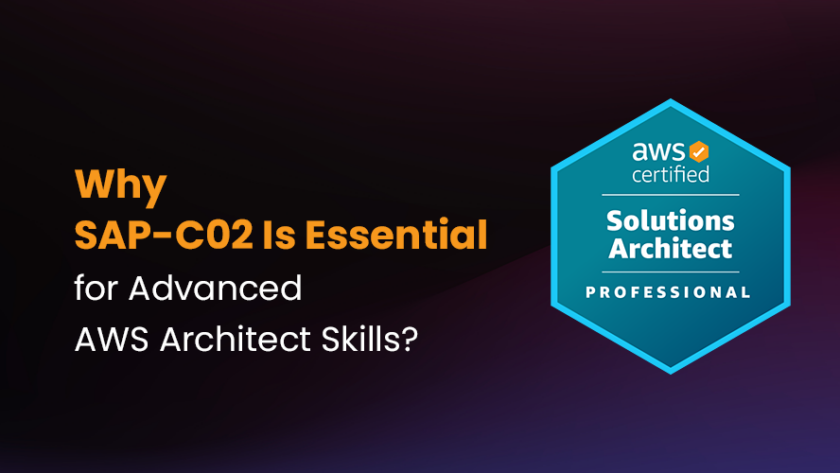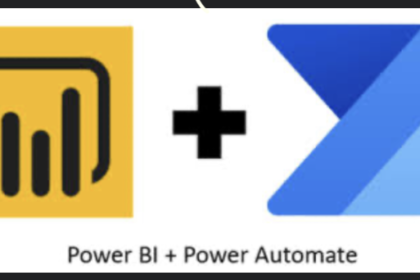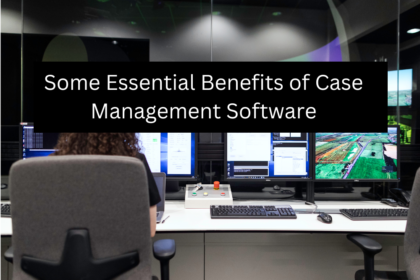This blog discusses the advanced AWS architecture skills covered in the exam AWS Solutions Architect Professional SAP-C02 course. Just as you need an architect to design buildings that ensure durability and safety, you also need a cloud solution architect to design and implement scalable, secure, and efficient cloud-based architectures. Read through to learn more about it!
Understanding the AWS SA Professional Role
One of the big differences between an AWS Certified Solutions Architect Associate (SAA-C03) and AWS Certified Solutions Architect professional(SAP-C02) is the ability to implement what you design. In addition, the SA PRO knows how to operate, troubleshoot, and improve the solution after it’s been deployed. A solution architect bridges the gap between technology and business by managing the entire process of creating system architecture, selecting technologies and platforms, optimizing costs, assessing risks, compliance, governance requirements, and improving performance.
At AWS, the solutions architect role requires a special combination of skill: technical expertise, business acumen, and customer advisory skills. An SA Pro is responsible for understanding a customer’s business objectives and building and implementing the best technical solutions to achieve those goals using AWS services. Usually, two scenarios require solutions architecture:
- Enhancing technology for an existing application, requiring hardware refresh or software re-architecting
- Creating a new solution from scratch, where the architect needs to decide the best-fit technology to address business requirements.
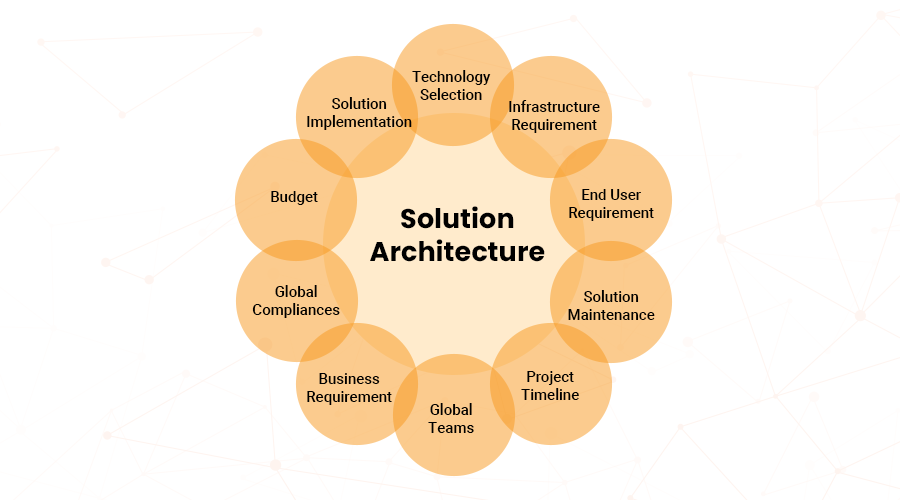
The SAP-C02 exam covers all the advanced skills covering different aspects—data, infrastructure, networking, scalability, security, and maintenance—to implement a business solution.
Hights of the SAP-C02 Exam
AWS Solutions Architect Professional is a deep-dive exam that has a prerequisite of two or more years of experience in using AWS services to design and implement cloud solutions. The exam enables a candidate to provide expert guidance about architectural design that extends across multiple applications and projects within a complex organization. You need advanced knowledge and skills to solve complex problems, which include automating manual processes and optimizing security, cost, and performance.
AWS Certified Solutions Architect – Professional (SAP-C02) has four different domains, and each exam domain has a corresponding weighting.
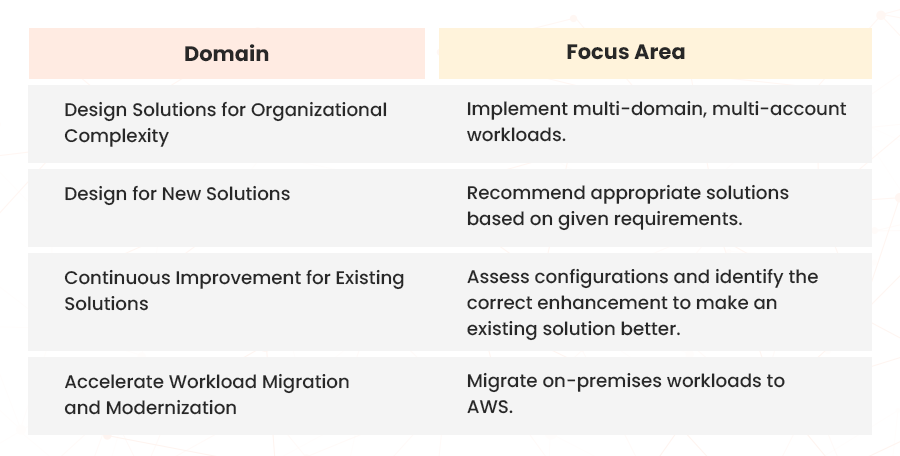
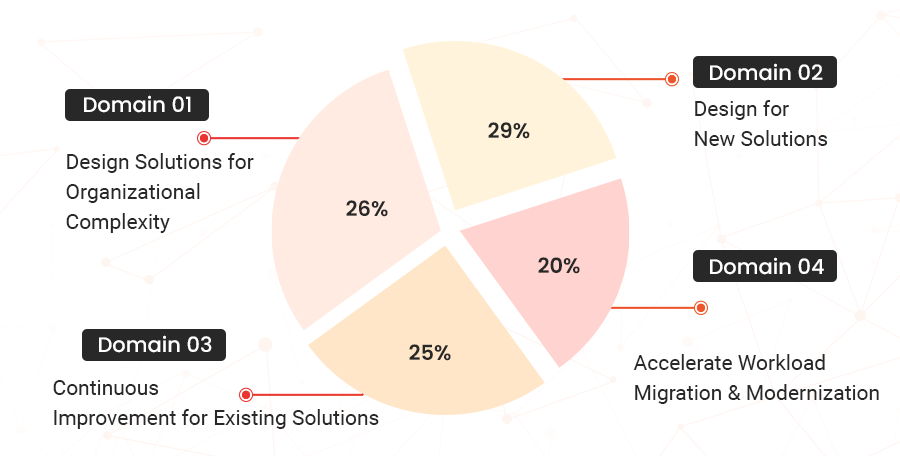
Exam Preparation
Based on the weighting, some domains can have more or fewer questions than others. In addition, each domain includes several task statements, which list the knowledge and skills needed to accomplish a particular task or activity in AWS. This exam is regarded as difficult with complex scenarios in every question. A good approach to prepare for this exam is to focus on the task statements. This will help you deep dive into the AWS services, their features and types and how they are used in different scenarios.
Read: Revolutionizing the Gaming Experience: How Mobile App Development is Changing the Game in 2024
AWS Well-Architected Framework
SAP-C02 is entirely built around the AWS Well-Architected Framework. This framework helps you understand the pros and cons of decisions you make while building systems on AWS. The Framework provides architectural best practices for designing and operating secure, reliable, efficient, cost-effective, and sustainable workloads in the AWS Cloud. You can use these best practices as standards to measure your architectures and identify areas for improvement.
The exam focuses heavily on the six pillars of this framework for designing advanced solution architecture:
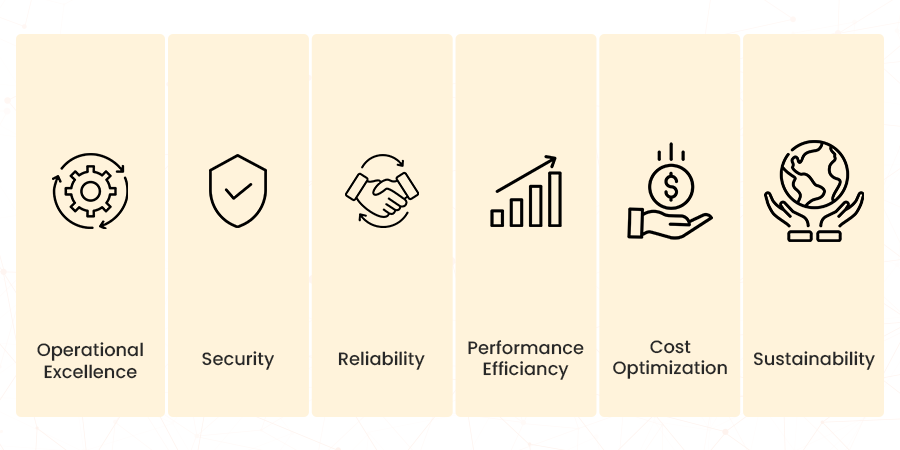
- Operational Excellence – support development and run workloads effectively to deliver new features and bug fixes into customers quickly and reliably.
- Security – implement best practices for data protection, identity management, and compliance using the AWS shared responsibility model.
- Reliability – design fault-tolerant and highly available systems.
- Performance Efficiency – use computing resources efficiently to meet current as well as future system requirements.
- Cost Optimization – build and operate cost-aware workloads without compromising efficiency
- Sustainability – reduce environmental impact through efficient resource usage.
Every task statement relates to the framework. For example, Domain 2: Design for New Solutions, which has the highest weighting of 29%, has the following task statements:
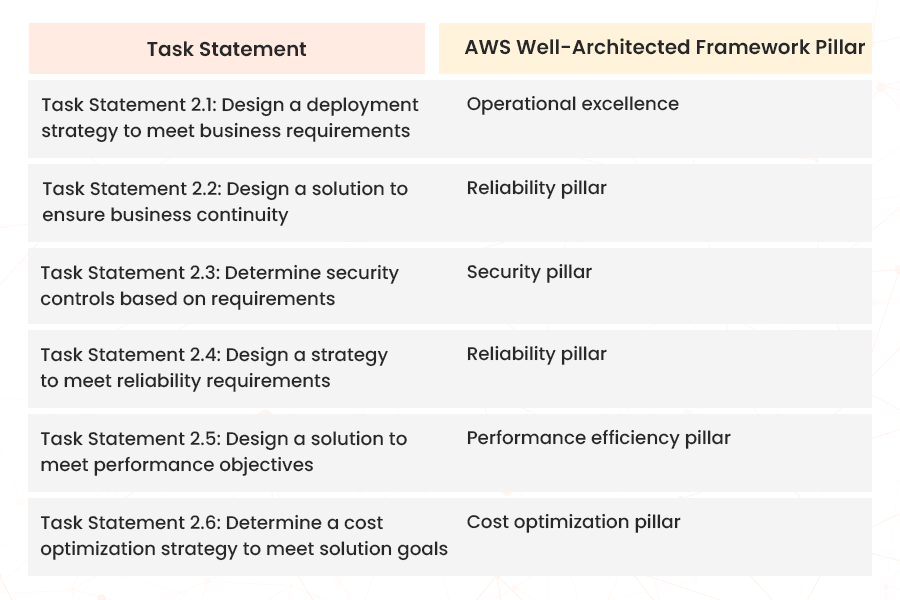
See the exam guide for the complete list of task statements.
Exam Preparation
Even though you need a deep understanding of the framework, you don’t need to memorize every detail of the framework. Understand the framework from these perspectives.
- How do the pillars influence architectural decisions?
- How can the principles of the framework apply to real-world scenarios?
- How does AWS assess workloads using the Well-Architected Tool?
- How are AWS services mapped to these pillars?
- What are different architecture best practices and how to compare multiple architectures?
Attributes of AWS Solution Architecture
While real-world solution architecture may vary depending on the use case, AWS solutions often share some common attributes. An SA Pro must understand each attribute and how they coexist in the solution design and interrelate with other attributes:
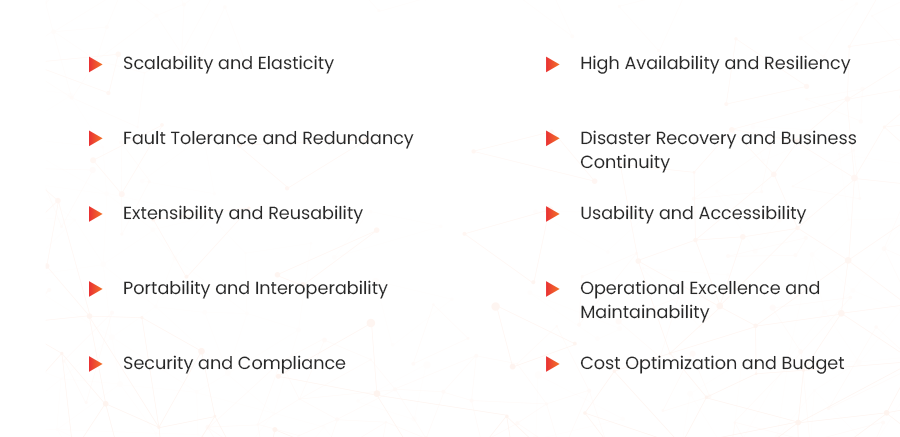
- Scalability and elasticity: scalability is the ability to handle larger workloads; elasticity is the ability to adjust resources automatically to meet demands
- High availability and resiliency: high availability is the ability to operate continuously with up to 99.999% availability of applications. Resiliency is the ability of a workload to recover from infrastructure or service disruptions dynamically.
- Fault tolerance and redundancy: fault tolerance is the ability to absorb problems without impacting service levels. A Fault Tolerant infrastructure aims for 100% uptime. A fault-tolerant application is also considered highly available. Redundancy refers to duplication of hardware or software components to protect against single points of failure.
- Disaster recovery and business continuity: disaster recovery is the ability to respond to and recover from an event that threatens business continuity. Business continuity is the ability to minimize disruption and continue operations when something unexpected happens.
- Extensibility and reusability: Extensibility is the ability to add new capabilities to the solution. It requires a loosely coupled architecture. Reusability is the ability to use a solution more than once in different contexts.
- Usability and accessibility: usability is the ease with which customers can use the solution; accessibility makes the solution usable by everyone.
- Portability and interoperability: portability allows an application to work across different environments, without any need for change. Interoperability is the ability of one application to work with other applications. An SA Pro needs to consider interoperability during the solution design phase.
- Operational excellence and maintainability: operational excellence is the ability to support development and run workloads effectively. Maintenance is the regular checks and updates to ensure the solution provides optimal performance. An SA Pro should focus on these two aspects for a long-term solution.
- Security and compliance: security protects data and applications. Compliance helps an organization to meet standard security protocols. A solution architect must be aware of the customer’s compliance requirements and ensure security at different phases of the solution design.
- Cost optimization and budget: a cloud budget is a financial plan for managing costs of cloud services. During technology selection, an SA Pro must evaluate different price options for cost optimization.
Advanced architecture skills
AWS Certified Solutions Architect – Professional (SAP-C02) is a deep-dive course. Here are a few advanced architecture skills covered in the course.
Organizing Your AWS Environment Using Multiple Accounts
Using multiple AWS accounts to help isolate and group resources based on business purpose or ownership, thereby helping customizers optimize across most of the AWS Well-Architected Framework pillars. A multi-account architecture is an AWS best practice based on the AWS Well-Architected Framework. A well-architected environment, has the following components:
- Multiple AWS accounts
- Multiple organizational units (OUs)
- A well-planned structure
Exam Preparation
Learn how to use AWS Control Tower to create landing zones and how to integrate Control Tower with AWS Organizations.
Design a migration architecture to the AWS cloud
Cloud migration is the process where you move digital assets like data, applications, and IT resources to the cloud. Businesses can keep leveraging their current investment by moving their on-premises or other cloud services to AWS. While migration can be a complex process, AWS makes it seamless with a wide range of migration and modernization solutions to help move and improve your workloads from on-premises environments, hosting facilities, or other public clouds.
As a solution architect you are responsible for:
- Assess the existing on-premises infrastructure and the technical requirements.
- Select an appropriate migration strategy (like re-hosting, re-platforming, re-factoring, re-purchasing, retiring, or retaining).
- Calculate cost and evaluate budget.
- Ensure security and compliance.
Sometimes organizations might have a mix of both on-premises and cloud infrastructure, which requires designing a hybrid architecture.
Exam Preparation
You must have a good understanding of the AWS Cloud Adoption Framework and the AWS Migration tools such as AWS Migration Hub, AWS Database Migration Service, AWS DataSync, AWS Snow Family.
Design a cost-effective solution
Cloud adoption success often depends on efficient cost management. An AWS solution architect must know how to create a fine balance between high performance and lower costs, based on the AWS Cloud Cost Governance framework. AWS offers a suite of services and tools to ensure that cloud resources are used efficiently, costs are aligned with budget goals, and wastage is minimized.
Exam Preparation
You must understand the following best practices and learn how to apply these skills in real-world scenarios:
- AWS billing and cost management tools
- AWS cost optimization strategies
- AWS budgeting techniques
- Efficient resource allocation in AWS
Design a fault-tolerant architecture on AWS
When you design a solution, you need to ensure that its fault tolerant so that it can withstand subsystem failure and maintain availability, without impacting AWS service-level agreement (SLA). Mastering fault-tolerant and high-availability design patterns and services, and disaster recovery strategies is essential for passing the SAP-C02 exam. AWS offers different architectures and services for creating a fault-tolerant system design.
Exam Preparation
- AWS Reliability Principles
- AWS Fault-Tolerant Architecture
- AWS Services for Fault-Tolerant System Design
- AWS Service Categories for Fault Isolation
- Fault Tolerance and AWS SLA
Final Thoughts
This blog talks about why SAP-C02 Is Essential for Advanced AWS Architect Skills and how the AWS Solutions Architect Professional certification equips us with the knowledge and skills to consider all the solutions and find the best one. As the backbone of the cloud solution design and implementation and the advisor that the customer leans on, an SA brings strategic and transactional perspectives to defining a business solution.
